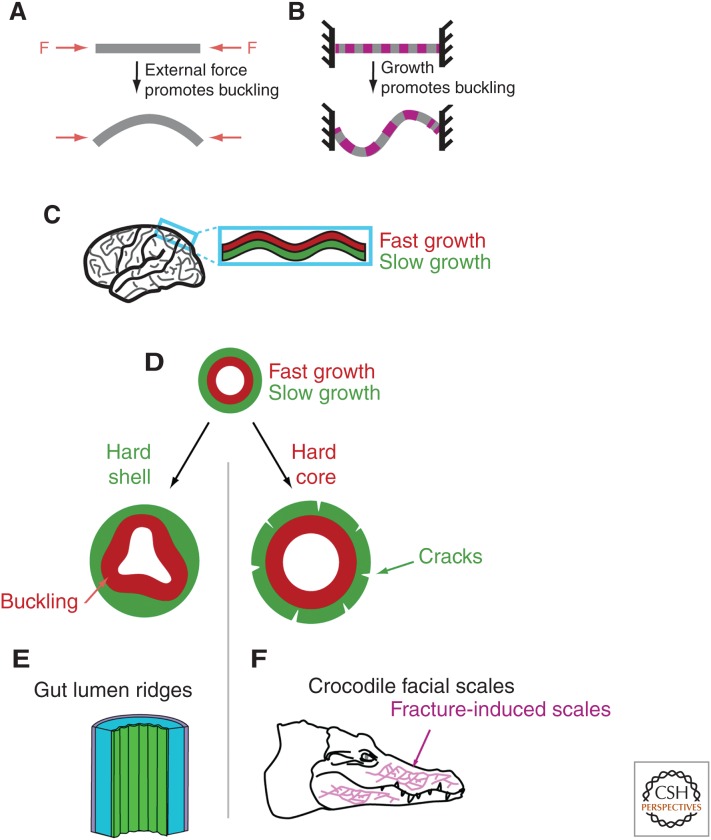Figure 4.
Making 3D shapes. (A) If an elastic rod or sheet is subjected to compressive forces, the rod will buckle above a certain threshold. (B) Buckling may also proceed in the absence of an external force when the structure grows, provided it is constrained at its ends. (C) Folds of the mammalian cortex have been proposed to stem from a buckling instability in which the fast growth of the external layer of the cortex is constrained by the slower growth of another layer below it. (D–F) Apposition of tissues with different growth rates may give rise to very different 3D structures depending on the boundary conditions. To illustrate this, we consider a fast-growing layer surrounded by a slow-growing layer. If the surrounding layer is rigid and makes a hard shell (left), buckling may proceed in the fast-growing inner layer. Such a mechanism has been proposed to initiate gut lumen ridges (E). If it is the fast-growing layer that is the strongest and makes a hard core (right), then the external layer will be deformed and may even crack. This has been proposed to drive the formation of facial scales of crocodiles (F).

